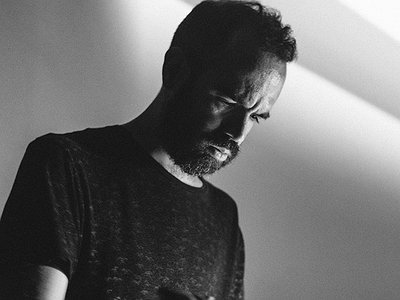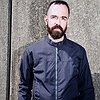Name: Peter Kirn
Nationality: American
Occupation: Sound- and audiovisual artist, journalist, founder of create digital music, technologist
Current Release: Bellona, USA on Establishment
Recommendations: I’m rewatching the 90s scifi show Babylon 5. It’s a bit more wooden and campy than I remember, but I think it’s important in that it has a different kind of heroism in it. The characters don’t see immediate positive impacts from their actions; they face choices that require compromise, sacrifice, risk. They maintain hope in the face of real darkness; they’re forced to work together to achieve things. And even then, they learn how to make decisions in a world where things are really falling apart. I bring this up because I think it’s an alternative to the typical cowboy/underdog American mythology. But it’s still a very American show. It could be the America that I’d be hopeful about again, post-Trump. It’s a way out of misogyny, but also out of narcissism and nihilism.
For something completely different, look at Merce Cunningham’s revolutionary dance Biped. It was a landmark in augmenting dance with digital technology, which is to say it was also a landmark in transhumanism. But it’s also deeply rooted in Merce’s choreography, which always managed to break up the tyranny of the proscenium as well as the hold that flatness of perspective had on dance. I think that is doubly important for us – especially in techno, but in electronic music in general, which can suffer from “frontness” in its motion in the same way. And the dance has a really beautiful score, too, by Gavin Bryars.
A big influence on me was working with Viola Farber, the choreographer/dancer who was also a veteran of the Cunningham Company. I’m really indebted not only to Viola’s commitment to discipline and imaginative movement, but her commitment to life. So this dance is a good reminder of the potential of art to expand our way of being human.
Website / Contact: If you enjoyed this interview with Peter Kirn, visit his website, facebook profile or vimeo channel to find out more.
When did you start writing/producing music - and what or who were your early passions and influences? What what is about music and/or sound that drew you to it?
I think my first memories of childhood are all pretty much musical. I was messing about on the piano literally as soon as I could reach the keys. From there, it wasn’t long before I decided to start scrawling something on paper and calling it notation, plus toting a toy tape recorder around and making recordings. Or I was in our basement listening to records, where I had on repeat the unlikely combination of the Simon Sisters and a box set of Beethoven symphonies. Maybe that means regularly unlearning music and rediscovering it is a necessary cycle.
For most artists, originality is first preceded by a phase of learning and, often, emulating others. What was this like for you? How would you describe your own development as an artist and the transition towards your own voice? What is the the relationship between copying, learning and your own creativity?
Emulation was somehow part of that musical upbringing. But I also have a somewhat impatient imagination. So pretty much as soon as I start copying something, it changes. And you very often come up with an idea or discover some sound or pattern you want to explore, and it goes in a different direction. I’m too easily fascinated by exploration not to get sucked into that. I’d say at this stage what I’m learning most is the possibilities of setting rules and restrictions – the fact that once you do that, things oddly seem to open more, not less.
What were your main compositional- and production-challenges in the beginning and how have they changed over time?
The first challenge for me was just coping with notation; it’s nice that the combination of electronic media and improvisation sets you free from that. I’ve also at times had to deal with the way in which the classical/concert tradition can become a burden. It’s not any burden in terms of knowledge – on the contrary, I’m appreciating that side more and more. But you do feel this pressure of the scene, your peers, the history of the music you’re making. I’d say what has freed me up compositionally is to step out of the scene I came from, to just be a foreigner to music (as well as, in Berlin, a foreigner to everything else). Then you find more newness coming out of yourself.
In production, I’d say my biggest challenge is that I just don’t have so much of a production education, and then I’ve had my hands in a lot of different areas. So I’m still feeling my way out there, and training my ears on that side.
What was your first studio like? How and for what reasons has your set-up evolved over the years and what are currently some of the most important pieces of gear for you?
My early experiences in the 90s pretty much traced the evolution of electronic music tools, because I got to work with Cakewalk for DOS on the PC, with early versions of Max and other interactive tools, and with an introduction to synthesis via vintage Buchla and Moog modular. I really got addicted to digital sound through some of those experiences, like leaving long convolutions running overnight in Tom Erbe’s Soundhack program and waking up to find smeared, ambient creations.
Doing convolution effects and granular processing and other sound design concoctions led me to the very first releases of Ableton Live. I used Live as an experimental sound generator, by setting all the warp modes and tempo settings intentionally wrong and messing up field recordings. I was working with modern dancers, and the ability to use a computer as a live instrument was a huge breakthrough. I was able to create these strange sonic worlds for the dancers. Club music for me is the mirror image; both were about moving bodies with sonic gestures, even if there it was often avoiding beats and in club music, it’s outlining them.
Now, I’m working with a combination of my own tools (in software like Pure Data), and my favorite commercial stuff. Reaktor Blocks for me is a revelation. And I like select pieces of hardware, certainly including the MeeBlip synth I co-produce with engineer James Grahame.
How do you make use of technology? In terms of the feedback mechanism between technology and creativity, what do humans excel at, what do machines excel at?
Well, I think any musical instrument, any system of analysis, that’s a technology. Species counterpoint is a technology. The Sonata is a technology. What’s happened is, while a violin embodies models of how music works, the machines we have now represent ever larger chunks of thinking. So to me, picking up any software or hardware instrument and deciding how to approach it, that whole process is part of how you think compositionally. That’s true onstage or in the studio, both.
Production tools, from instruments to complex software environments, contribute to the compositional process. How does this manifest itself in your work? Can you describe the co-authorship between yourself and your tools?
I’m in a unique position in that I know a lot of the people making the tools I use. Composers and musicians have always had a relationship with builders, luthiers, tuners. Part of what I try to do with my website is to make that process and relationship transparent in the modern context – so it isn’t just a black box of marketing. And those people are, by and large, brilliant and nice people, too, so that’s a bonus.
I think there’s a luxury in switching between making something yourself – whether that’s code or Pd or Reaktor – and using tools that are there already. In some way, each can be focusing or each can be a distraction. So, time allowing, I try to balance between those two, for variety and perspective if nothing else. Sometimes it’s quicker to whip up a Pd patch. Sometimes it’s easier to just do something in Ableton’s Simpler. I’m okay being led a little bit by my tools, though, because I’m always trying to get to this tilt of your will, where things are both intentional and unintentional at once, so that what comes out is intuition and emotion.
Collaborations can take on many forms. What role do they play in your approach and what are your preferred ways of engaging with other creatives through, for example, file sharing, jamming or just talking about ideas?
My favorite way of collaborating is still working across media and disciplines. I always loved theaters and stages so I’m always looking for a way to get there.
Sometimes my own work gets a bit personal, so it’s hard to always make that collaborative. But that’s also why I’m glad now to have some additional platforms. So CDM.link the site is a way of sharing ideas with others and highlighting what other people are doing. But now also the label Establishment has become a way for me to bring together like-minded artists and showcase their work.
And I’ve really enjoyed getting to do these performance collaborations in our MusicMakers Hacklab, which I initiated with CTM Festival and which has since spread abroad. I’m really interested in what happens when people make collaboration itself the technological fulcrum – not just trying to use a neat tool, but really to create something by combining different skill sets and knowledge.



